Contents
To get an early harvest of cucumbers, gardeners use greenhouses. However, due to a violation of the temperature regime and the level of humidity, cultures often get sick. Today we will talk about infectious and fungal diseases of cucumbers in the greenhouse, as well as pests and methods of dealing with them.
The main causes of
There are a number of reasons why a greenhouse cucumber can start to hurt. In particular, a violation of the technology of planting vegetables, which includes the use of infected planting material, a sharp change in the microclimate inside the greenhouse, high humidity. Dangerous and poor ventilation, lack of air exchange, leading to oxygen starvation of plants.

It is important to remove weeds and plant waste from the beds in time, carry out preventive treatment with drugs from diseases and pests, and collect ripe vegetables on time. You can plant a variety of vegetables that is resistant to diseases characteristic of the culture (for example, the cucumber variety Boy with a finger). Then there is a chance to reduce the risk of trouble to a minimum.
Video “How to increase the yield of cucumbers”
From this video you will learn how to increase the yield and prolong the fruiting of cucumbers.
Common diseases and their treatment
Each of the diseases caused by viruses or fungi has its own symptoms that allow you to recognize it and begin treatment.
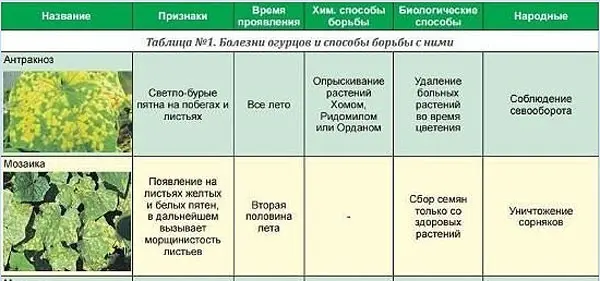
Mučnistaâ rosa
This disease is characterized by the appearance of a white coating on the surface of the leaf, which leads to the drying of the foliage and the death of the crop. Weeds carry powdery mildew, its causative agent is the mycelium of Erysiphales.
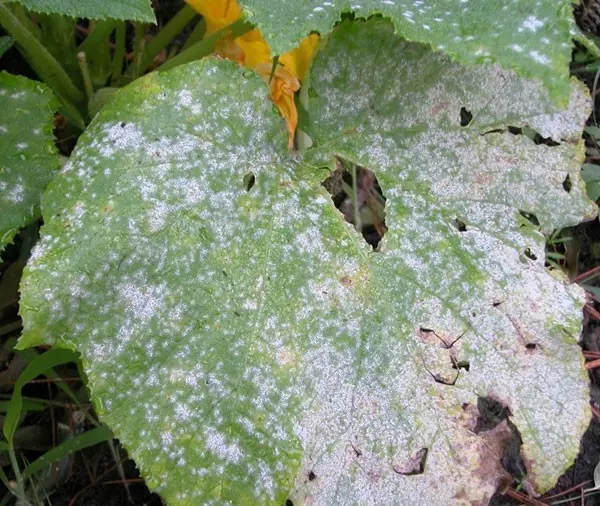
There is also downy mildew, or peronosporosis, in the presence of which yellowish-brown spots appear on the foliage, a gray-violet hue is visible on the back side. The causative agent of the disease is the fungus Plasmopara.
Both diseases are effectively treated with folk remedies: infusions of mullein and potassium permanganate.
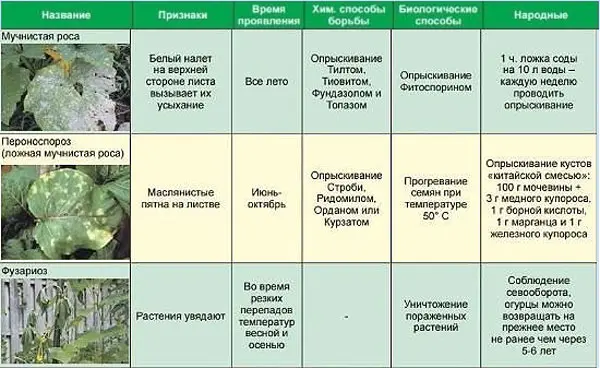
To prepare the first solution, mullein and 1 tablespoon of urea are dissolved in 1 bucket of warm water. To obtain a manganese solution, 1 g of the product is dissolved in 1,5 bucket of liquid, then spraying is carried out.
They also use solutions of marigolds and horsetail. Pollination of crops with sulfur placed in gauze also helps. In this case, the greenhouse is preliminarily closed. Of the drugs, Bordeaux liquid, copper and iron sulfate, Topaz, Zaslon, Fitosporin and Fundazol are recommended.
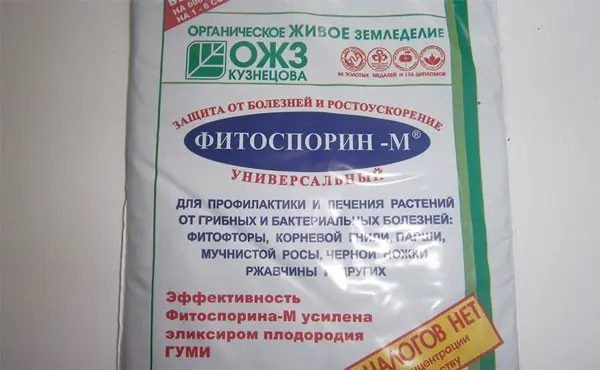
Gray and white rot
Gray rot occurs due to the defeat of the fungus Botrytis cinerea. Foliage and sinuses are covered with grayish spots. Mycelium affects almost all parts of the plant.
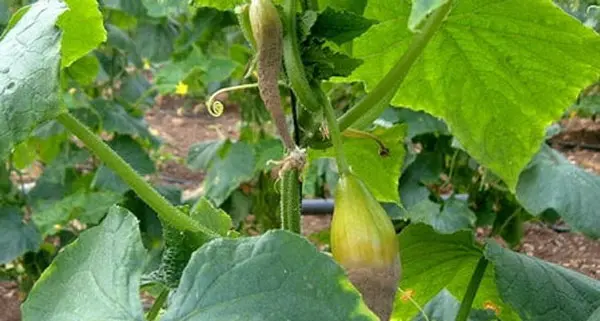
White rot or sclerotinia, caused by the same pathogen as gray rot, destroys plant cells, as a result of which they die. A symptom of the disease is a white, fluffy and cotton-like coating.
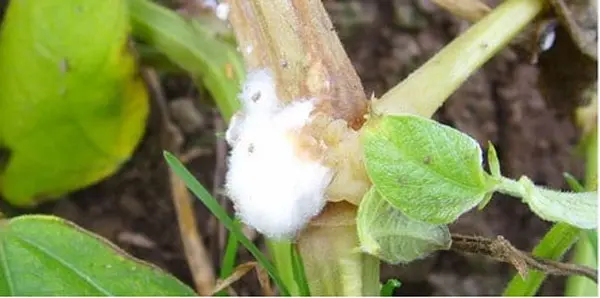
If the disease is just beginning, spraying Bordeaux liquid with the addition of copper sulphate and potassium sulfate to the solution will help against gray and white rot. But for the second ailment, dusting of leaves and shoots with copper-chalk powder is additionally used. In severe cases, fungicides are used: Hom, Fundazol, Ordan, etc.
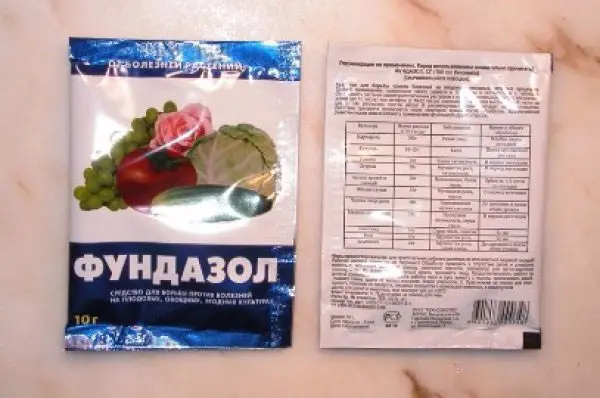
Bacteriosis
Bacteriosis, also known as corner spot, is caused by Pseudomonas lachrymans. It can be recognized by light brown spots on the cotyledons. Spotting also appears on fruits.
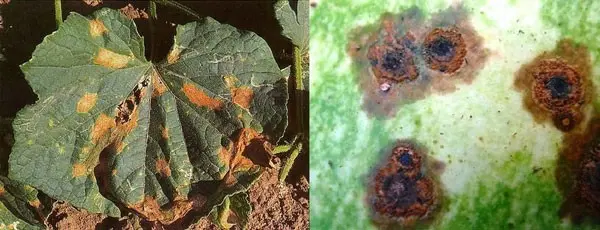
If the plants in the greenhouse are affected by bacteriosis, you need to remove the infected parts, treat the bushes with Bordeaux liquid, Fitosporin or Fundazol fungicides.
Root rot
The disease manifests itself at the beginning of fruiting, infection can be traced by the stem, which turns yellow and cracks, the leaves of the plants wither. It is better to remove vegetables that have died from rot from the site and burn them.
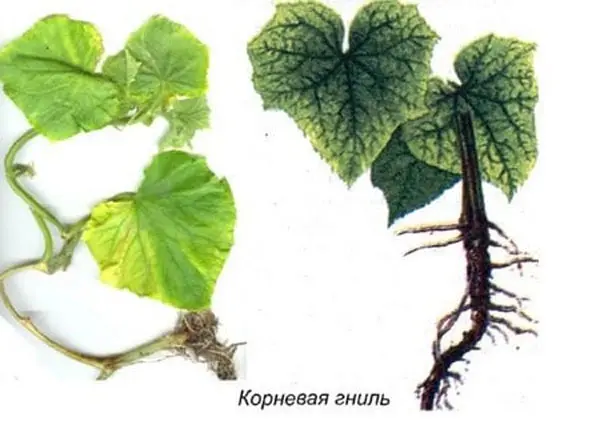
Effectively helps a solution of copper sulfate, for which they take 1 tsp. funds, 3 tsp. wood ash per 0,5 l of water. Crushed coal, chalk or ash is applied to the affected parts of the culture, after which they must be dried. Biological preparations “Bactofit”, “Pseudobacterin-2” and “Trichodermin” are used.

Antraknoz
A fungal disease that affects the entire plant. Yellowish spots can be seen on the surface of leaves and stems. The affected parts crumble and die, the fruits do not last long and acquire a bitter taste.
To help the plants, they are sprayed every day with a Bordeaux mixture, and a suspension of bleach is also used – 40 g of the product per bucket of water, which needs to be treated with crops once every 1 days.
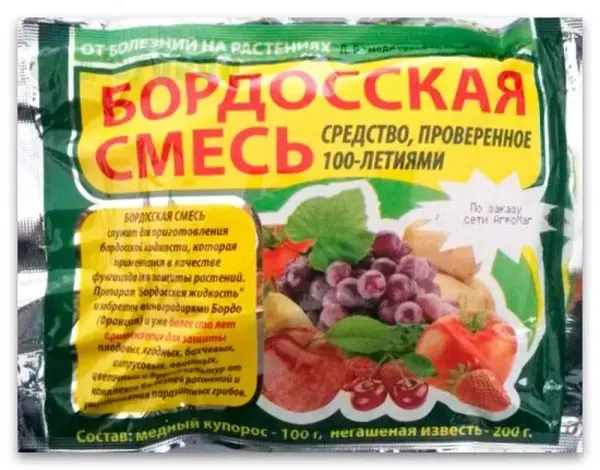
How to deal with pests
Among the pests of cucumbers growing in a greenhouse, the most common are spider mites, melon aphids and greenhouse whiteflies.
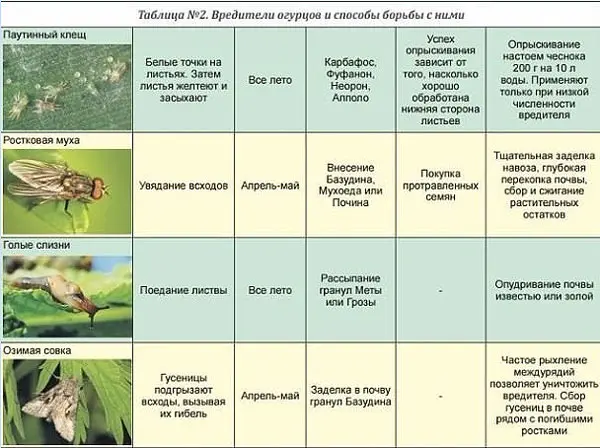
spider mite
This pest feeds on both seedlings and adult bushes. You can recognize the presence of parasites by the characteristic web that covers the plants, along which ticks move.
Acaricides are used to kill insects. It is advised to treat cultures with Akarin, Bicol, Fitoverm and other preparations. Of the folk methods at the initial stages of infection of plantings, a solution of onion is effective. For cooking, take 1 tablespoon of chopped vegetable, add a spoonful of pepper, liquid soap and wood ash. Shoots are sprayed 1 time in 5 days. Similarly, hot pepper tincture is used.
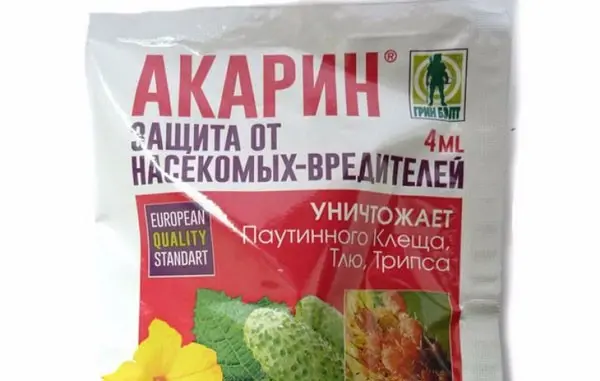
Melon Caviar
Aphid colonies parasitize greenhouse plants, sucking juice from green parts. At the initial stage of infection, wrinkling of leaves and stems is observed.
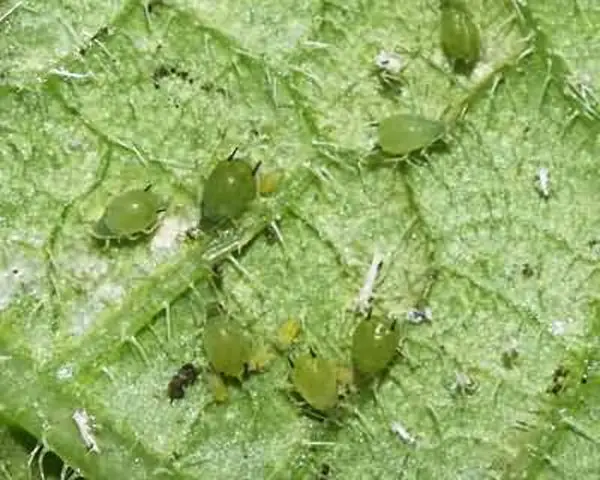
To destroy melon aphids, an infusion of red pepper and tobacco dust is used: 30 g and 200 g, respectively, per 10 liters of hot water. After insisting for a day, add 1 tbsp. l. liquid soap and 3 tbsp. l. wood resin. Of the purchased drugs, Inta-vir and Strela help.
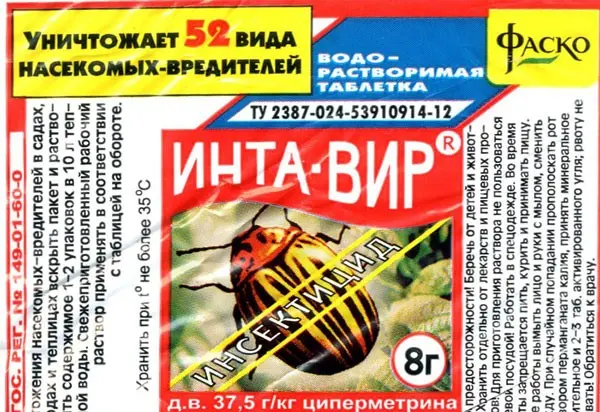
greenhouse whitefly
Such insects feed on plant sap, after which sugary secretions appear on the surface, on which fungi parasitize. Over time, if no action is taken, cultures wither and die.

Landings should be treated with pig, sheep, horse, cow, rabbit humus. Spraying with the Aktofit biological product 2-3 times during the entire growing season will also help.
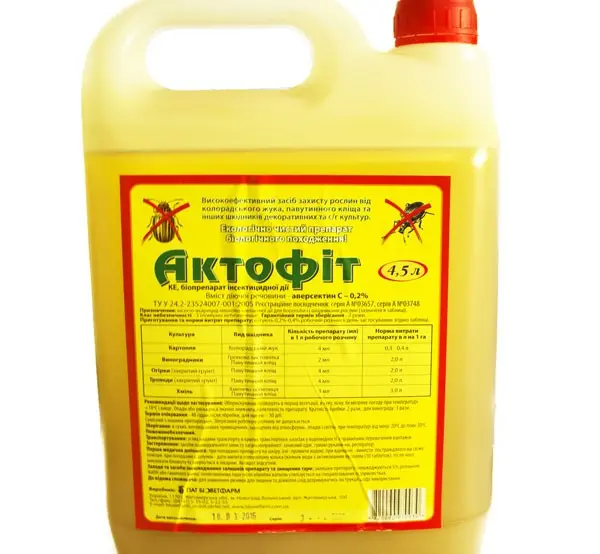
Preventive measures
Protection of greenhouse plantings implies constant cleaning of rotten fruits, affected and dry parts of plants, disinfection of the greenhouse, land and equipment. Among the preventive measures, one should mention maintaining the temperature regime at the level of + 23 … + 25 ° C, air humidity – at least 80%. Sowing of varieties resistant to diseases, warming up and dressing of planting material is carried out.
It is important to observe crop rotation, constantly ventilate the greenhouse and properly care for the plants.

Knowing the causes and symptoms of diseases will help every gardener to detect the disease in time and save his crop.









